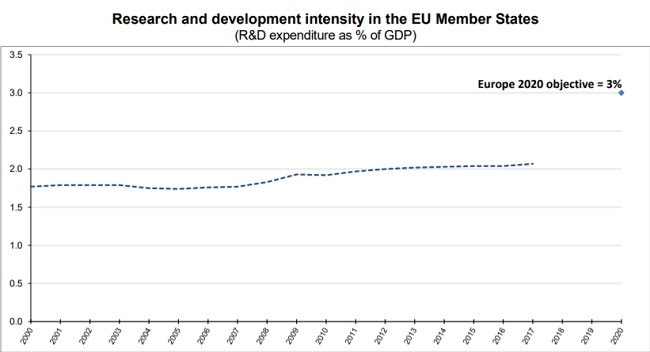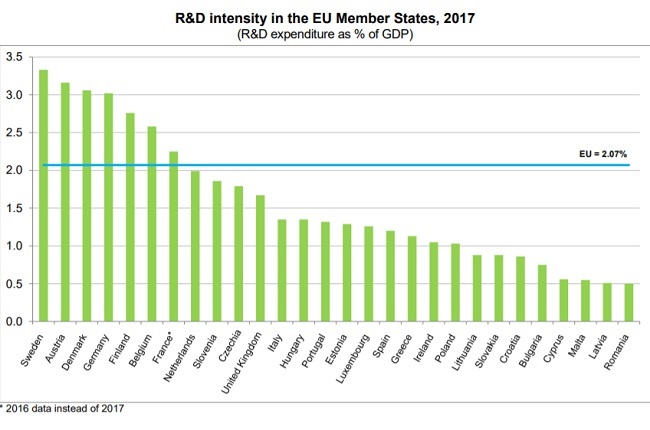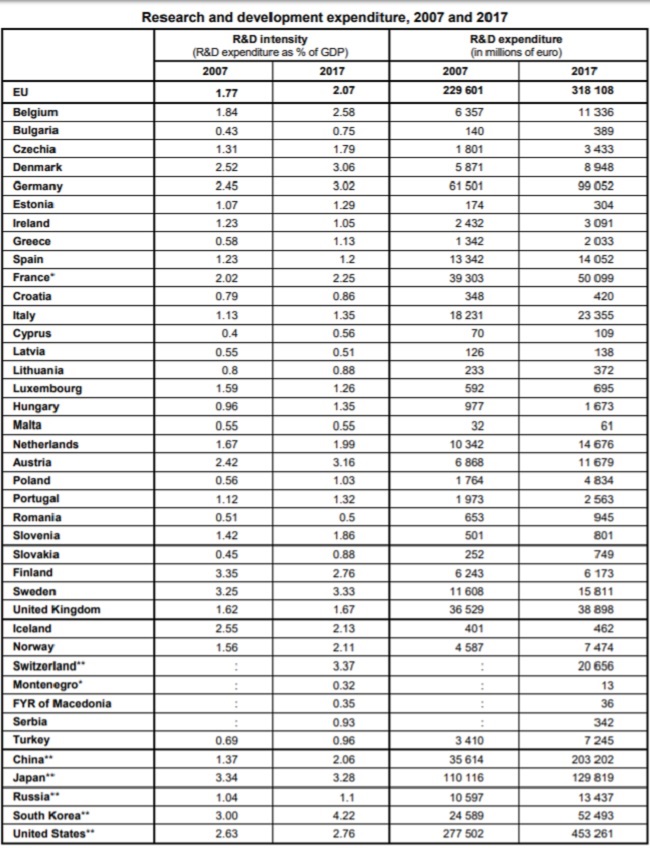Analytics, Education and Science, EU – Baltic States, Statistics
International Internet Magazine. Baltic States news & analytics
Thursday, 25.04.2024, 16:50
R&D expenditure in the EU increased slightly to 2.07% of GDP in 2017
 Print version
Print versionWith respect to other major economies, R&D intensity in the EU was much lower than in South Korea (4.22% in 2015), Japan (3.28% in 2015) and the United States (2.76% in 2015), while it was at about the same level as in China (2.06% in 2015) and much higher than in Russia (1.1% in 2015) and Turkey (0.96%). In order to provide a stimulus to the EU’s competitiveness, an increase by 2020 of the R&D intensity to 3% in the EU is one of the five headline targets of the Europe 2020 strategy.

R&D intensity above 3% in Sweden, Austria, Denmark and Germany
In 2017, the highest R&D intensities were recorded in Sweden (3.33%) and Austria (3.16%), followed by Denmark (3.06%) and Germany (3.02%), all with R&D expenditure above 3% of GDP, whilst Finland (2.76%), Belgium (2.58%) and France (2.25% in 2016) registered R&D expenditure between 2.0% and 3.0% of GDP. At the opposite end of the scale, eight Member States recorded a R&D intensity below 1%: Romania (0.5%), Latvia (0.51%), Malta (0.55%), Cyprus (0.56%), Bulgaria (0.75%), Croatia (0.86%), Lithuania and Slovakia (both 0.88%).

Highest share of R&D spending in the business enterprise sector in Slovenia and Hungary
The main sector in which R&D was performed in 2017 was the business enterprise sector in all Member States, except Cyprus and Latvia (where the higher education sector was the dominant performing sector) and Lithuania (where the share of higher education sector was the same as of business enterprise sector).
Highest share of R&D spending in the government sector in Romania and the higher education sector in Latvia
For the government sector, the highest shares were registered in Romania (32%), Lithuania (28%), Luxembourg and Latvia (both 26%). The highest shares of R&D conducted within the higher education sector were recorded in Latvia (47%), Portugal (43%), Cyprus (42%) and Estonia (40%).









 «The Baltic Course» Is Sold and Stays in Business!
«The Baltic Course» Is Sold and Stays in Business!

